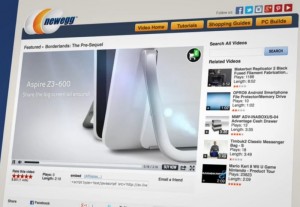
Checkout abandonment is the scourge of ecommerce. Yes, that may come across a bit dramatic, but when 54% of shoppers terminate their session just moments before finalizing their purchase, it’s easy to understand online merchants’ passionate distaste for it. Thankfully, as the ecommerce industry continues to grow, people are becoming more wary of site abandonment and, specifically, how to combat the pest that is checkout abandonment.
Today, we’re going to talk about a few of the so-called “golden rules” of combating checkout abandonment that every merchant should follow in almost every case. Then, because rules are meant to be broken, we’re going to show you how a few companies are making big strides by going against the grain.
1. Always Offer Guest Checkout
 According to a 2012 Usability Study from the Baymard Institute, 76% of all online retailers allow for consumers to move through checkout without making an account. Since then, it’s safe to assume that more retailers have caught on and followed suite. Why is guest checkout such an important detail?
According to a 2012 Usability Study from the Baymard Institute, 76% of all online retailers allow for consumers to move through checkout without making an account. Since then, it’s safe to assume that more retailers have caught on and followed suite. Why is guest checkout such an important detail?
- According to a 2012 study from Statista, 21% of shoppers abandoned a purchase because the “process took too long.”
- A 2013 UPS/comScore report (.pdf link) found that 20% of people surveyed abandoned a cart because they didn’t want to “register/create an account just to make a purchase.”
- A study from Janrain shows that 38% of people think it sounds less appealing to try and come up with another username and password than it does to tackle household chores—from folding the laundry to scrubbing toilets.
It’s clear that users don’t want to sign up and they’re willing abandon checkout to avoid doing so. When the majority of your competitors are allowing for frictionless checkout, you don’t want to be the odd man out.

Unless you’re Bonobos.com.
The Exception
One of the very few times we’ve seen forced account registration go right is on Bonobos.com. After you’ve selected an item, a sleek menu slides from the right, revealing your cart contents.
From here, a click on “Checkout” will initiate a quick, two-step registration that takes no more than a few seconds. If you’ve already registered, entering your email will take you to the next step immediately. It’s a quick process that rewards repeat visitors, doesn’t deter new visitors, and expands your email marketing reach without putting a burden on the shopper. It all happens so quickly that checkout abandonment isn’t an option!
2. Always Use a Linear Checkout Flow
When it comes to designing a checkout flow, always keep user attention moving straight down the page. It’s the logical progression we’ve all become accustomed to in our years buying things online, and there’s little reason to change what works.
According some internal research (as displayed in a previous blog post), the fourth most commonly cited reason for checkout abandonment is a confusing checkout process. The old adage rings true once again: K.I.S.S., Keep It Simple, Stupid.
Unless you’re Bellroy.com.
The Exception
As more online vendors become enthused by the idea of efficiently moving consumers toward conversion, the one-page checkout has gained popularity. Getting all of a user’s details collected in one go is a quick way to build leads.

Bellroy.com’s checkout is a shining example of how to break the established mold of moving straight down the page. In their checkout flow, users zig down the page, zag back to the top, and move down again until they’ve crossed the width. Broken into sections, the checkout still makes logical sense while defying convention.
Impressively, when you shrink the page down, the checkout reorganizes into a traditional, top-down arrangement, accounting for lost width.

In this case, going against the norm results in improved, self-direct functionality.
3. Always Keep Mobile and Desktop Sites Functionally Equivalent
According to a few studies, 2014 was the year mobile browsing volumes surpassed their desktop counterparts. This means more people are visiting you from their smartphones and tablets than from their personal computers, and yet many companies maintain a desktop-first philosophy of design.
Always keep your mobile website as fully-functioning as your desktop version. Make sure that any page or feature usable on your PC also works on mobile devices or you’ll be cutting out half of your viewership.
Unless you’re Woot.com.
The Exception

Woot.com’s mobile version strips out a good deal of the community-based aspect of the daily deal site in favor of showcasing their product more prominently. Notice the removal of the “discuss this deal” and the user-generated blurbs. The reason this works out for them is that the site’s success has hinged on moving customers through the frontpage quickly into checkout before deals expire.
Woot.com’s slimmer mobile version is a great example of breaking convention when necessary to further promote the site’s vision. Sticking to the rules is a safe move, but if by removing certain aspects, you can further enhance the most important part of your site (in this case, making deals quickly), it’s a worthwhile trade-off.
Checkout abandonment is a tricky problem to nail down, but having a few general guidelines is a great place to start. Of course, today’s examples also show why it’s a good idea to go against the grain occasionally. As always, our recommendation is test and test again!
Article originally posted on UpSellit’s blog
(207)









